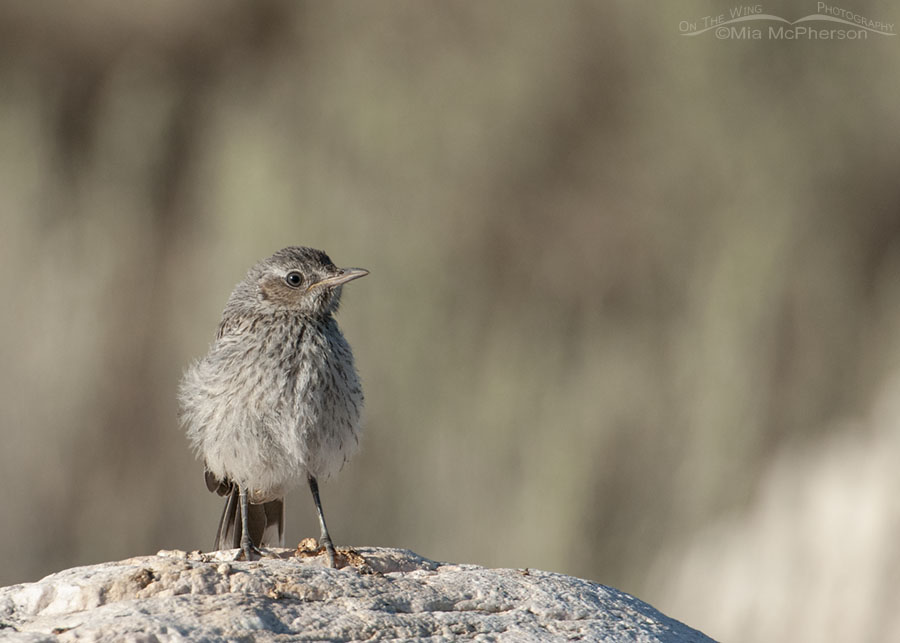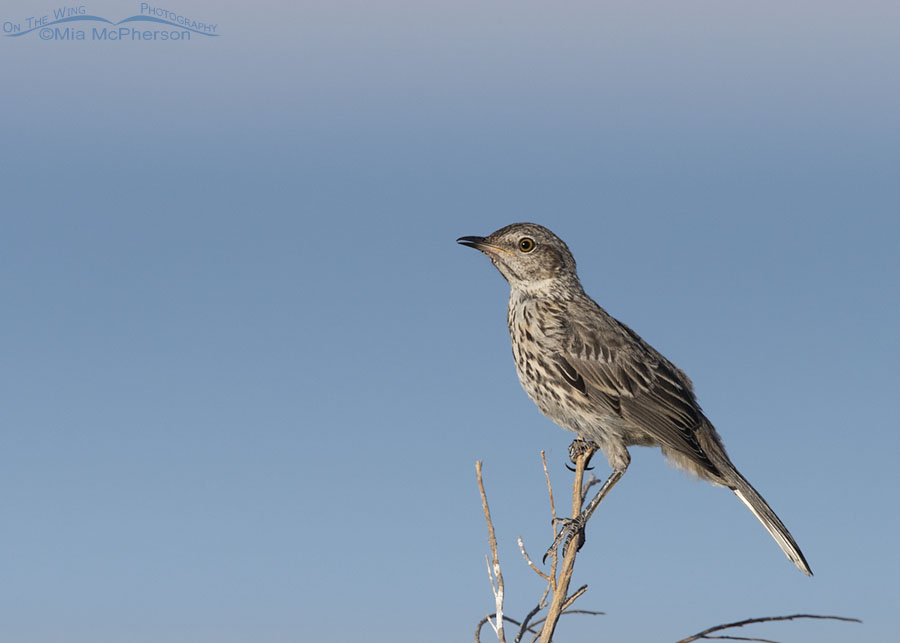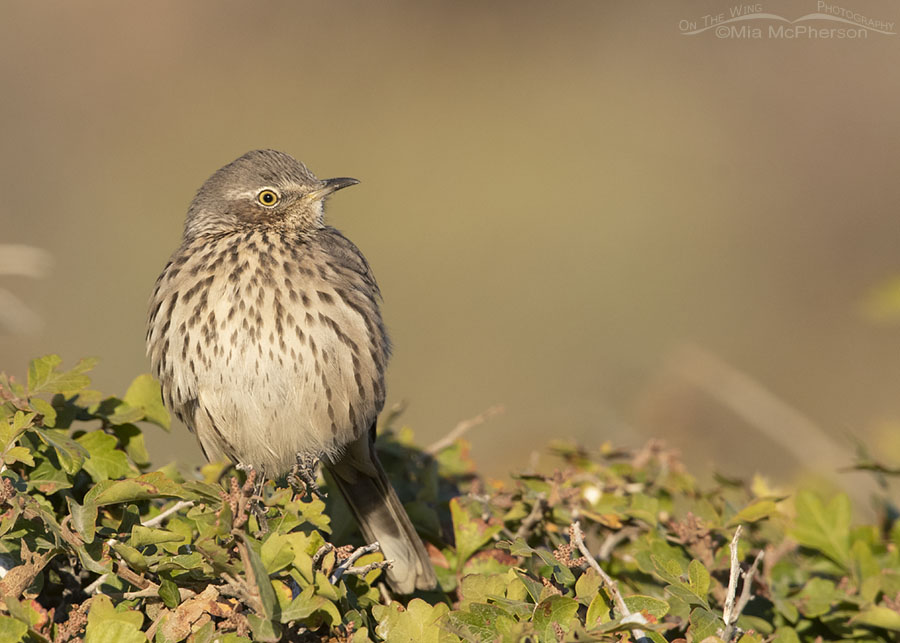 Juvenile Sage Thrasher on Antelope Island State Park – Nikon D200, f8, 1/800, ISO 400, Nikkor 200-400mm VR with 1.4x TC at 400mm, natural light
Juvenile Sage Thrasher on Antelope Island State Park – Nikon D200, f8, 1/800, ISO 400, Nikkor 200-400mm VR with 1.4x TC at 400mm, natural light
Yesterday I was reminded that I saw an early first of year Sage Thrasher on Antelope Island State Park on March 8, 2016 so I know I need to start looking for the return of our “Mountain Mockingbirds” here in northern Utah.
While the Sage Thrashers are in Utah I can see and photograph three different age related plumage phases.
Juvenile Sage Thrashers are pretty fluffy looking shortly after leaving the nest. Their eyes are brownish, their chests lack the heavily streaked appearance of an adult and they have pronounced gapes as well as bills that are lighter in color when compared to the bills of adults.
 Immature Sage Thrasher and blue sky – Nikon D810, f7.1, 1/1600, ISO 400, +0.3 EV, Nikkor 500mm VR with 1.4x TC, natural light
Immature Sage Thrasher and blue sky – Nikon D810, f7.1, 1/1600, ISO 400, +0.3 EV, Nikkor 500mm VR with 1.4x TC, natural light
Weeks after hatching and before fall migration the immature Sage Thrashers look different than they did as juveniles.
The eyes of immature Sage Thrashers look more yellow than brown, their gapes are less pronounced but still visible and their bills become darker tipped. The heavy streaks that they lacked on their breasts as juveniles have developed. Immature Sage Thrashers look much more like adults than they did as juveniles do soon after leaving their nests.
 Adult Sage Thrasher perched in golden light – Nikon D500, f7.1, 1/1600, ISO 800, Nikkor 500mm VR with 1.4x TC, natural light
Adult Sage Thrasher perched in golden light – Nikon D500, f7.1, 1/1600, ISO 800, Nikkor 500mm VR with 1.4x TC, natural light
Adult Sage Thrashers have yellow eyes, spotted/streaked breasts, gray-brown upper parts and their bills are dark towards the tip and their lower mandibles are lighter towards the base of the bill. The Sage Thrasher image above was taken towards the end of September and just before the thrashers migrate out of Utah.
The comparisons I have made between juvenile, immature and adult Sage Thrashers are basic, there are more ways to determine their age but I wanted to keep the comparisons simple.
In my post yesterday on Greater-Sage Grouse I mentioned that the grouse are sagebrush obligates which means they depend on the sage to live. Sage Thrashers are also sagebrush obligates and any protections granted to the grouse also help to protect these thrashers and many other species that live in our sagebrush seas for all or part of their lives.
Listen to the song of a Sage Thrasher here.
As soon as I can I will be out looking for the Sage Thrashers to return to northern Utah.
Life is good.
Mia
Click here to see more of my Sage Thrasher photos plus facts and information about this species.


This is a new bird for me. Until this post I knew nothing of Sage Thrashers. Your pics and helpful narrative are wonderful. Thanks Mia.
The little ones are so cute.I am looking forward to the migration and promising myself to be outdoors, taking it all in.
Love that song – and enjoyed messing with the cat beside me.
Thank you.
Very nice age comparison photos! The top fluffy juvie is my favorite. Probably because I don’t see them at that stage often, but the cute baby face wins me over.